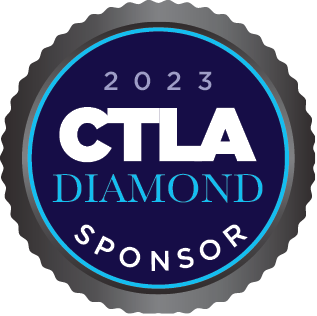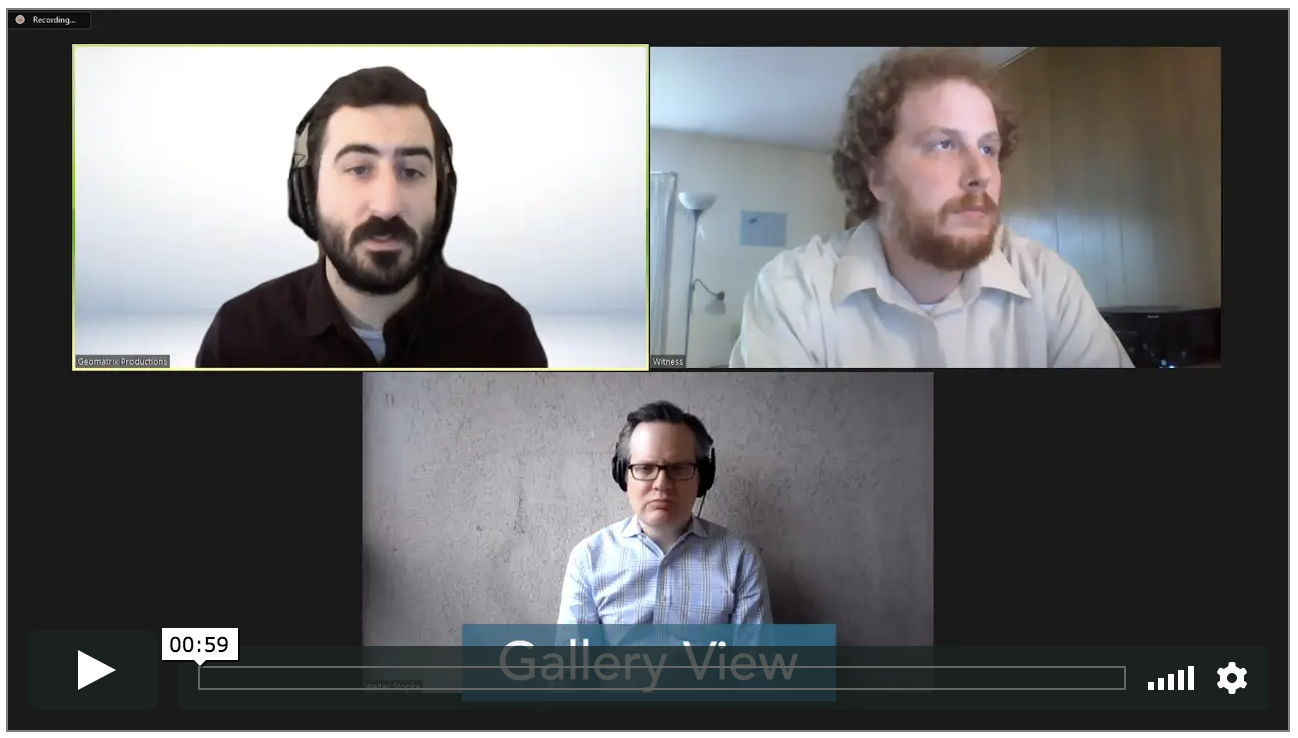
Remote Video Depositions: Overcoming the Limitations and Utilizing the Features
by Geomatrix Productions in Legal Video
Recording Quality: Know the Difference
Many video conferencing software applications offer built in recording capabilities and it’s important to understand the quality of video you are getting with these options and the limitations they can present. While do-it-yourself Zoom recordings may appear as an easy solution they have severe limitations that make them ill-suited for high quality video deposition recording. With Geomatrix, the quality of the remote video recording resembles traditional in-person video depositions.
Here’s a side by side comparison of some features essential for producing a high quality remote video deposition recording.
Control over on-screen video feed: Zoom NO. Geo YES.
There is value in your witness’s reaction; a video produced by Zoom’s automated recording function that switches views depending on who is speaking loses important moments with your witness.
Multiple back-up video files recorded: Zoom NO. Geo YES.
Geomatrix creates multiple data and audio back-up recordings, your deposition can be archived in the real world and not only live on the cloud as it would with a Zoom auto-recording.
Realtime tech support during deposition: Zoom NO. Geo YES.
Individual participant software setup, exhibit presentation, final product delivery is handled by a knowledgeable professional. Technician run remote video depositions allow for attorneys to focus solely on the examination while the technician employs such features as…
On-screen presentation of exhibits: Zoom YES. Geo YES.
Presenting exhibits during remote video depositions is a powerful feature of these applications but requires learning a new technology or adding a trained trial technician to your deposition. The features available are quite effective and are similar in some ways to our electronic trial presentation services or a picture-in-picture video deposition. All attending the deposition can see exhibits shared in real time. Remote video depositions allow for exhibit annotation with distinctions of who creates the mark ups. We offer a look into a technician operated, and self-run exhibit presentation in this short video.
Remote video deposition recording technology is evolving quickly. Call Geomatrix to find out more about it or to schedule your remote video deposition.
Read more
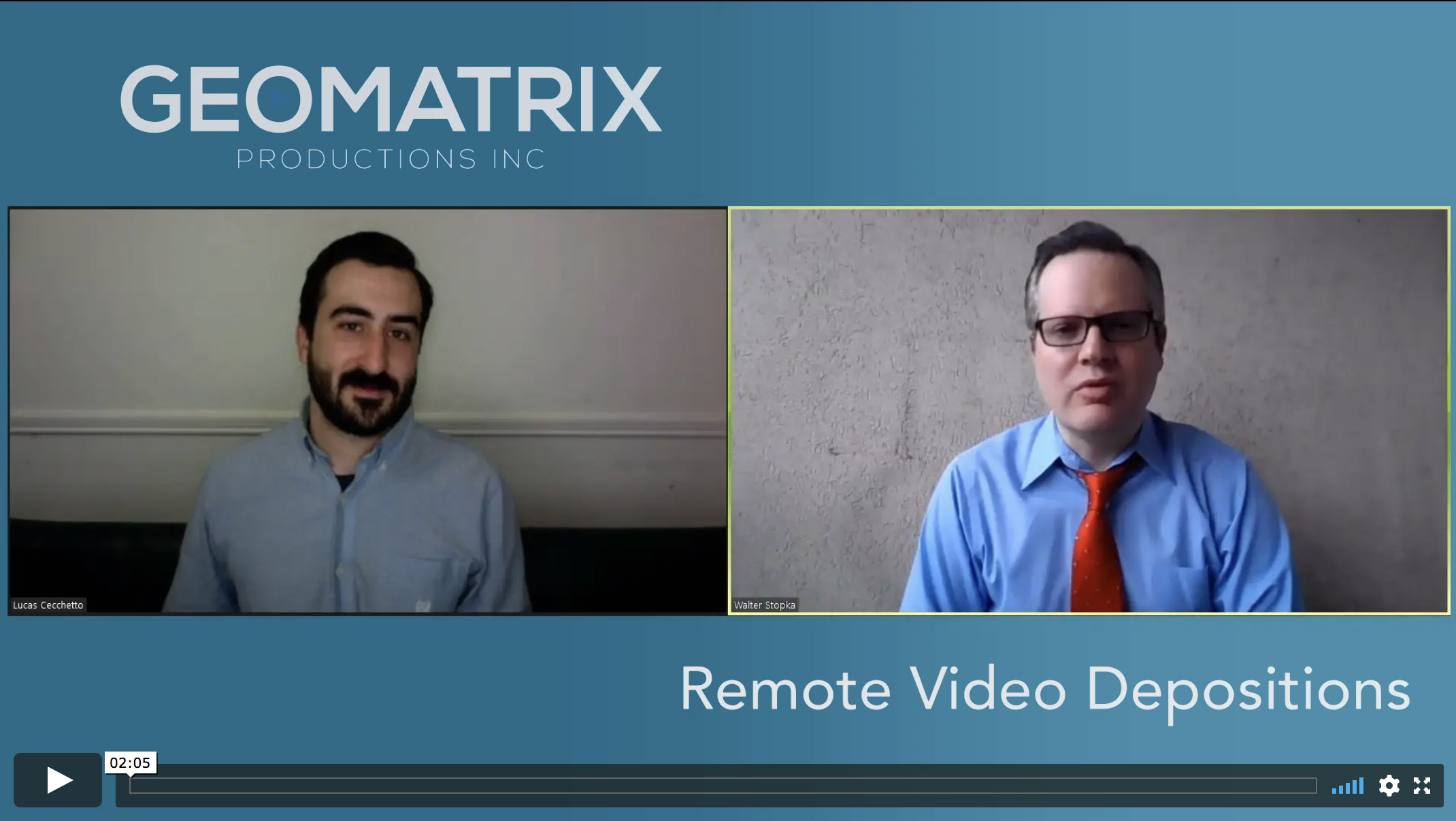
Remote Video Depositions Explained
by Geomatrix Productions in Legal Video
Some of the changes brought about by the COVID-19 pandemic will likely not go away when things go “back to normal.” Remote recorded depositions are one of the services that you’ll find comes in handy even when social distancing becomes a distant memory. Watch our short explainer video to learn just how easy we make conducting a remote recorded video deposition.
Ready to schedule your first remote recorded video deposition? Still have some questions about it? Call us at 203-389-0001. We can help.
Read more
Are You Guilty of Being “That” Zoomer?
by Geomatrix Productions in Legal Video
When meeting in-person, it’s easy to set up a quiet, private place to meet one on one. Given the times we live in, finding a private corner for yourself might not be as easy to come by. When talking in front of a camera, it’s important to be aware of yourself and your surroundings. Watch our very brief helpful tips video to help utilize your video conference software and be a good Zoomer at your next meeting.
Call us to find out how we can help you use video conferencing effectively in your practice.
Our thanks to Amanda Nugent of Carmody Torrance Sandak & Hennessey and Board Secretary of the New Haven County Bar Association, and her father Donald Harvey for their assistance!
Read more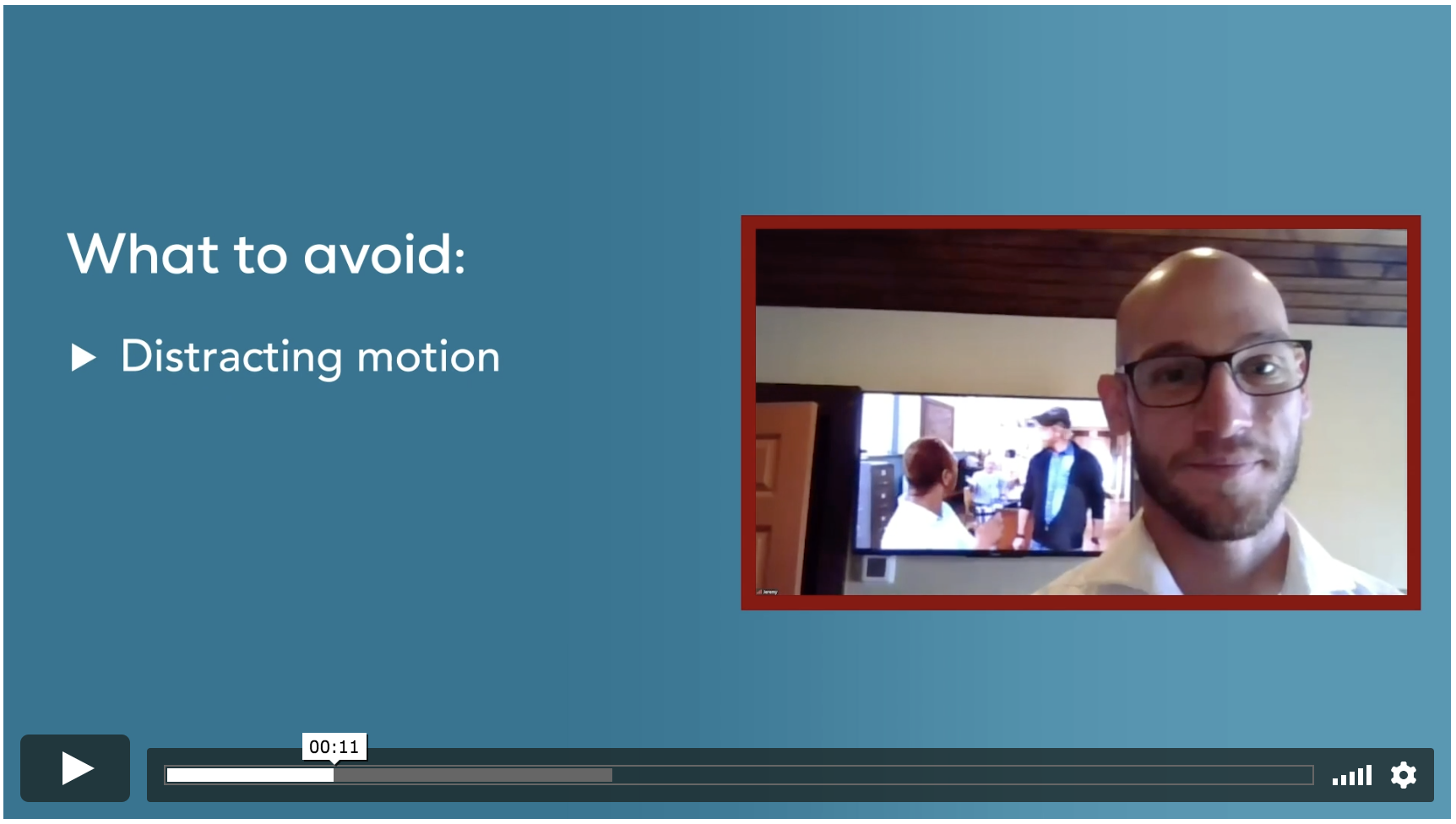
5 Unprofessional Video Conference Mistakes to Avoid
by Geomatrix Productions in Legal Video
With video conferencing becoming an essential way to communicate between colleagues and clients, it’s important to be mindful of how you represent yourself on screen. From the expression on your face to the scenery behind you, what’s caught on camera will be reflected on the screen for others to see. When having a meeting via video, a little preparation will ensure you present a professional appearance.
Watch the short video to find out the Do’s and Don’ts of preparing for your next video meeting. Call us to find out how we can help you use video conferencing effectively in your practice.
Our thanks to Jeremy D’Amico for his assistance demonstrating the Do’s and Don’ts!
Read more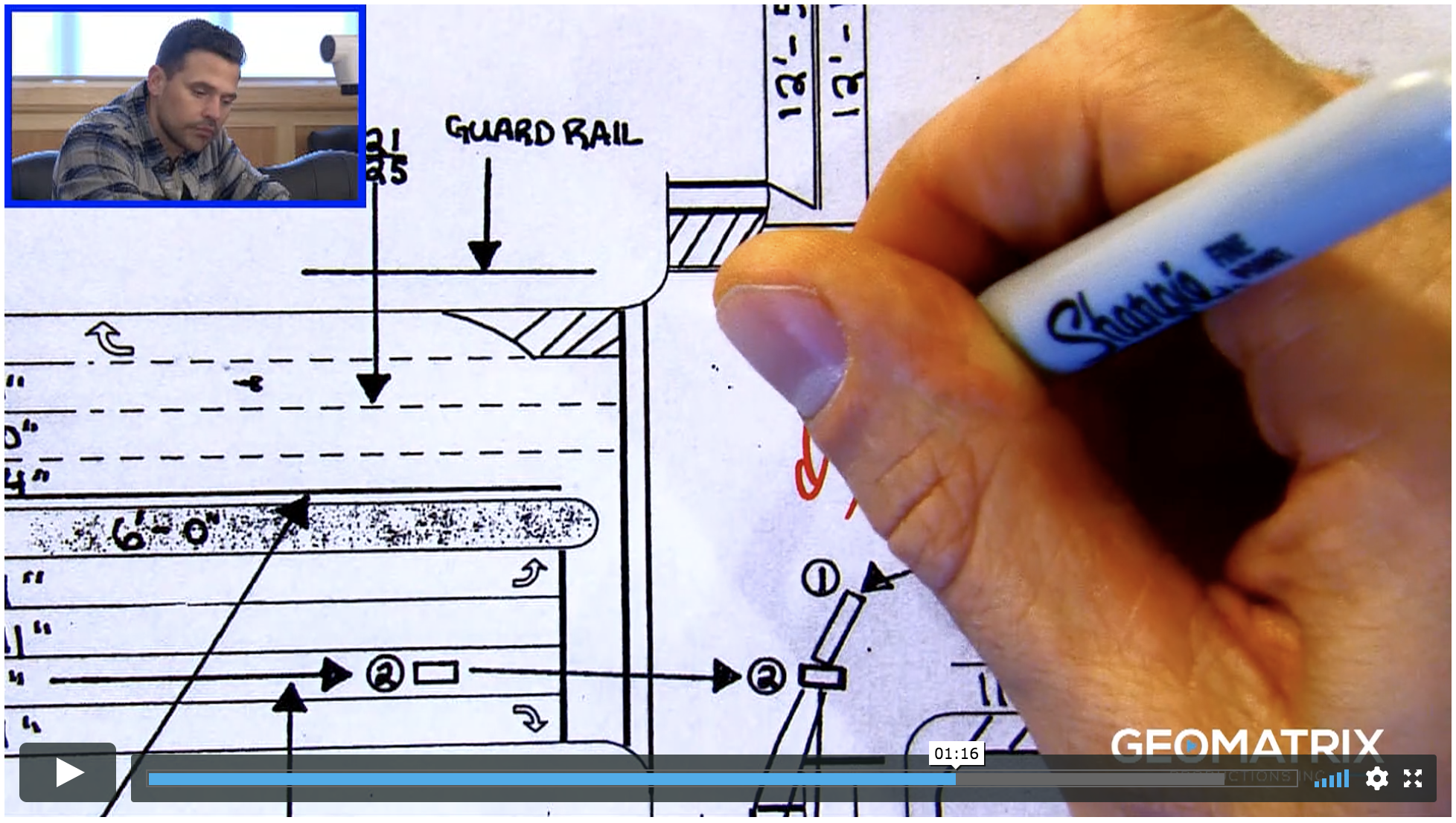
3 Reasons Why Picture in Picture Video Depositions are Here to Stay
by Geomatrix Productions in Legal Video
Improved technology means picture in picture video depositions have finally come into their own. There are many reasons why they are so effective, here are three big ones.
1. Deponent is always on camera. Even when visual evidence is presented. Picture in picture video depos use a secondary source, be it an Elmo document camera or a connected laptop to present visual evidence on screen while the depo tech keeps the primary camera focused on the deponent.
2. Easy inclusion of original digital evidence. Sourcing images directly from a laptop means higher quality visual evidence is not compromised by having to point the camera at images printed out on paper, or having to shoot a video playing on a monitor.
3. Capture a witness’ reaction in real-time as they view the evidence. Seeing a witness react their first time watching a surveillance video of a crash can be incredibly impactful.
Watch the short video to see how PIP video depos work and learn how you can use them effectively. Call Geomatrix to find out more, or to schedule a picture in picture video deposition.
Read more
Ex-insurance insider reveals why insurance companies undervalue your case and what to do about it.
by Geomatrix Productions in Legal Video
Insurance adjusters use algorithms to reduce a human tragedy to cold, quantifiable data. These numbers generally determine their view of what a case is worth, and inform the offer they’re willing to make.
“They’re all sad, all compelling, but they’re paper.” -Bill Ronalter
Plaintiff’s attorney Bill Ronalter of Shipman and Goodwin has insider insight into the process of insurers, having spent six years working in the large loss division of a major national insurance firm. In that environment he says, there are often a hundred cases vying for attention, “They’re all sad, all compelling, but they’re paper.”
“We wanted to show the insurance company the strengths of our clients, the types of witnesses they were going to be faced with.” -Gayle Sullivan
Charles Price and Gayle Sullivan of McEnery Price Messey & Sullivan believe those paper case files fail to convey a true sense of the human impact involved. When they need to bring special attention to a case, they bring in legal video experts. In a recent injury case they worked with Geomatrix to produce a Day in the Life settlement video. According to Sullivan, “We wanted to show the insurance company the strengths of our clients, the types of witnesses they were going to be faced with.” Apparently they succeeded, having settled the case for $13.5 million.
Bergenn and Ronalter have won over $60 million for their clients in cases where they worked with Geomatrix.
Ronalter and Shipman & Goodwin partner Jim Bergennn are masters of using video to take on the insurance companies. Over the past few years they have won over $60 million for their clients in cases where they worked with Geomatrix. Their strategy to achieve maximum effectiveness when presenting a case to the chain of insurance decision makers involves ensuring everyone involved gets a first-hand look at the videos they have Geomatrix produce.
Recalling his days working for the insurer, Ronalter said “What brings one case to the top of the pile is when we get video in. When I saw a video, well done, it really struck me.”
Call Geomatrix to find out how we can help bring your case to the “top of the pile.”
Read more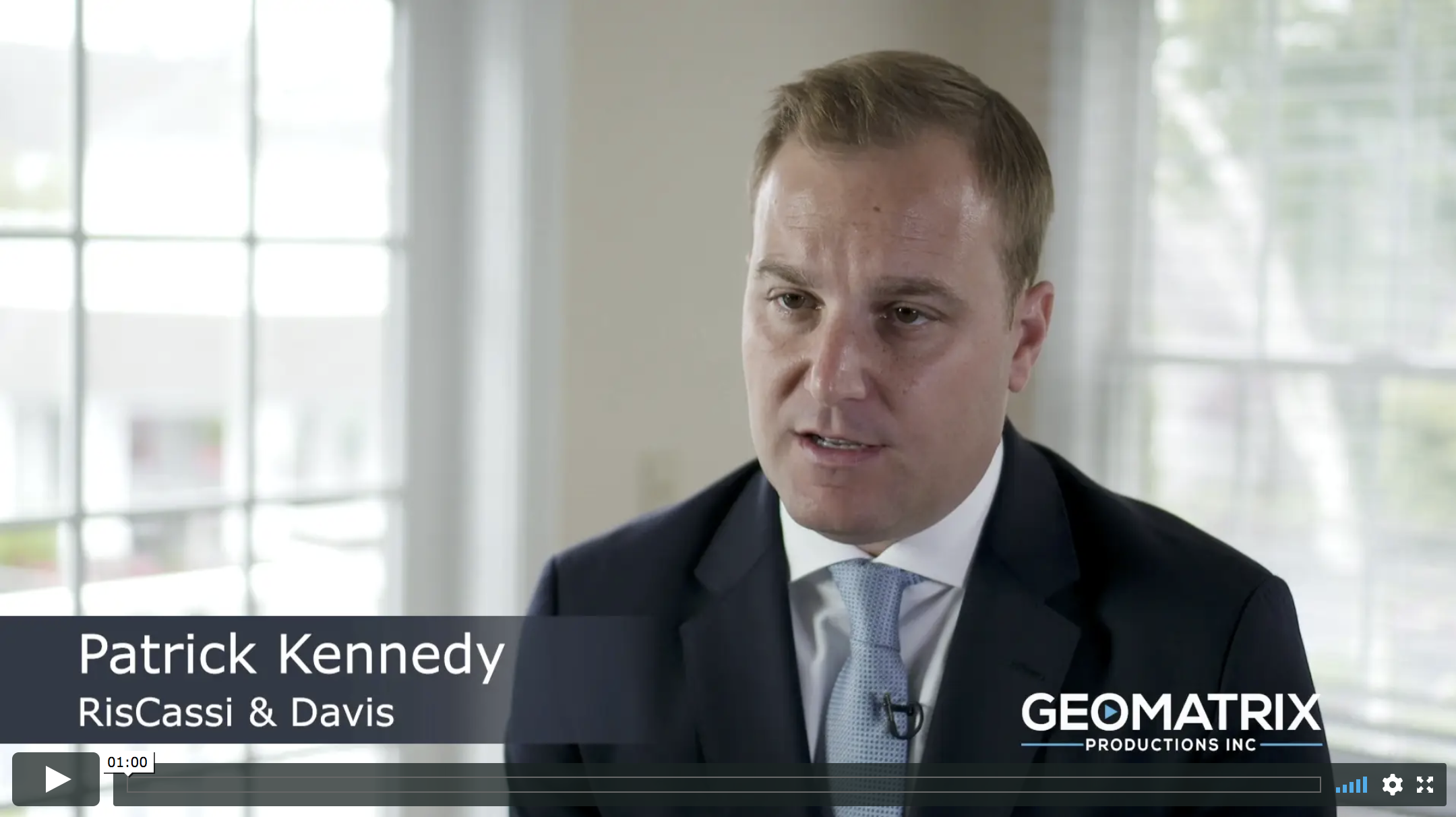
Attorneys Reveal How They Use Digital Tools to Win Cases
by Geomatrix Productions in Legal Video
No one wants to be outmatched when it comes to their evidence presentation, but a little planning is needed to most effectively use the powerful digital tools now available.
Multimedia technology has precipitated a revolution in the way evidence is conveyed to the courtroom. Video, high definition imagery, and diagrammatic graphics allow us to paint a clearer picture of a legal conflict than ever before, for both juries and judges. Running a successful electronic trial is a challenge that your predecessors did not have to face. But with proper coordination between litigator and technician, success is assured.
Establishing contact early is essential. Schedule an hour-long planning session with your trial tech; this way, you will be able to share media files, digitize hardcopy, and plan for the creation of any timelines, diagrams, or highlighted documents that the presentation will require.
“They’re used to being on their iPads and and computers and many times we feel if we’re presenting the evidence on paper, in sort of an old fashioned way, people aren’t paying attention in the same way.” – Patrick Kennedy, RisCassi & Davis
Getting started is relatively simple, but as you begin to plan your trial, there are a few potential sticking points to be aware of:
When dealing with digital images and documents, always try to secure a copy of the original file. Scanning printed or copied documents can result in a significant degradation of quality. Although a degraded image might look fine at normal magnification, it will become pixelated or blurred if it is enlarged. This can become an issue at trial, when specific details of an image need to be scrutinized closely.
Digitize any exhibits you plan to display in court, and provide them to the technician. This will make it easy to display, highlight, and magnify the files at any time during the trial. Be sure that they are scanned at a resolution of 300 dpi or higher, to avoid the potential magnification issues discussed above.
“You’re putting them up visually in front of them, highlighting the words in the documents, pulling them up while the witness is on the stand… it’s just so much more effective.” – John Kennedy, Kennedy, Johnson, Schwab & Roberge
If possible, get your exhibits marked for trial before providing them to the technician. If the digital file names are consistent with hardcopy labels, the trial tech will be able to respond quickly if it becomes necessary to deviate from the planned sequence of slides and videos. Bates stamps are a good alternative if pre-marking is not possible.
If your evidence includes video depositions, it is best to pursue a judge’s ruling on any potentially objectionable testimony in advance of the trial, to give the technician time to implement edits. If it is not possible to get an early ruling, be sure to request synchronization of the video and transcript well in advance of the playback date in order to minimize delays during in-court editing.
“I don’t want the attention to be on me. I want the attention to be on the evidence. And that’s what the juries want too.” – Bill Ronalter, Shipman & Goodwin
After you have provided the necessary materials and planned your digital presentation, it’s time to resume your usual pre-trial routine. Remember, the purpose of employing a trial tech is to take the task of running the visual side of the presentation off your plate, so that you are free to focus on the content of your argument. In addition, even if you manage to maintain your concentration, amateurish posters and technical delays can detract from the jury’s comprehension of your case. To minimize uncertainty and keep your head clear during arguments, it is highly advisable to delegate the operation of all multimedia technology to a dedicated professional.
Make sure you have the visual-evidence firepower to win your case. Download our white-paper “Litigation in the Software Age” which presents everything you need to know about successful litigation in the digital-age. From preparations and video depositions to equipment recommendations and securing permissions, this guide is a must-read for all litigators.
Download “Litigation in the Digital Age” NowYou will be asked to verify your email.
Read more
Medical Malpractice – Early Mediation – Know When to Show Them
by Geomatrix Productions in Legal Video

Sometimes it makes sense to show your cards as quickly as possible, and save everybody’s time. This was the decision Attorney Pam Cameron, of Moore, O’Brien & Foti arrived at recently as she brought a medical malpractice case to mediation.
This was a tragic case of an expectant mother who desired a home birth, only to have things go horribly wrong. The plaintiffs alleged that the defendants’ decisions fell below the standard of care and ultimately led to the death of the baby. The details of this case were complicated and technical and based largely on the interpretation of fetal monitor strips.
Cameron decided to have Geomatrix produce a video to clearly and concisely explain the essential facts of the case. The video included Cameron’s three experts, who were revealed for the first time in the video. The story of the case was told through their testimony, accompanied by the hospital records that depicted the minute by minute warning signs that the plaintiffs alleged the defendants ignored. The presentation of this alleged failure to take the appropriate actions that could have saved the life of the decedent is clear, comprehensive, and moving.
[The video] gave the adjusters and the mediators a complete understanding of the case, and it gave them a preview of how my experts would come across at trial.
Cameron presented the video to opposing counsel very early in mediation. So early in fact, that only one defense witness had been deposed in the matter. According to Cameron “This case was so technical that it would have been almost impossible to explain clearly in a position statement. Having the experts discuss it on video with visual assistance was very effective. It gave the adjusters and the mediators a complete understanding of the case, and it gave them a preview of how my experts would come across at trial. They could see and hear the evidence the way a jury would see it and hear it.”
The three defendants had agreed to a “global settlement” that required them all to approve of the outcome, and soon after they viewed the video the mediation took place and the case resolved. The case was settled to the plaintiff’s satisfaction, swiftly and confidentially.
If you have a complicated case that needs to be communicated clearly, contact Geomatrix to see how we can help.
Read more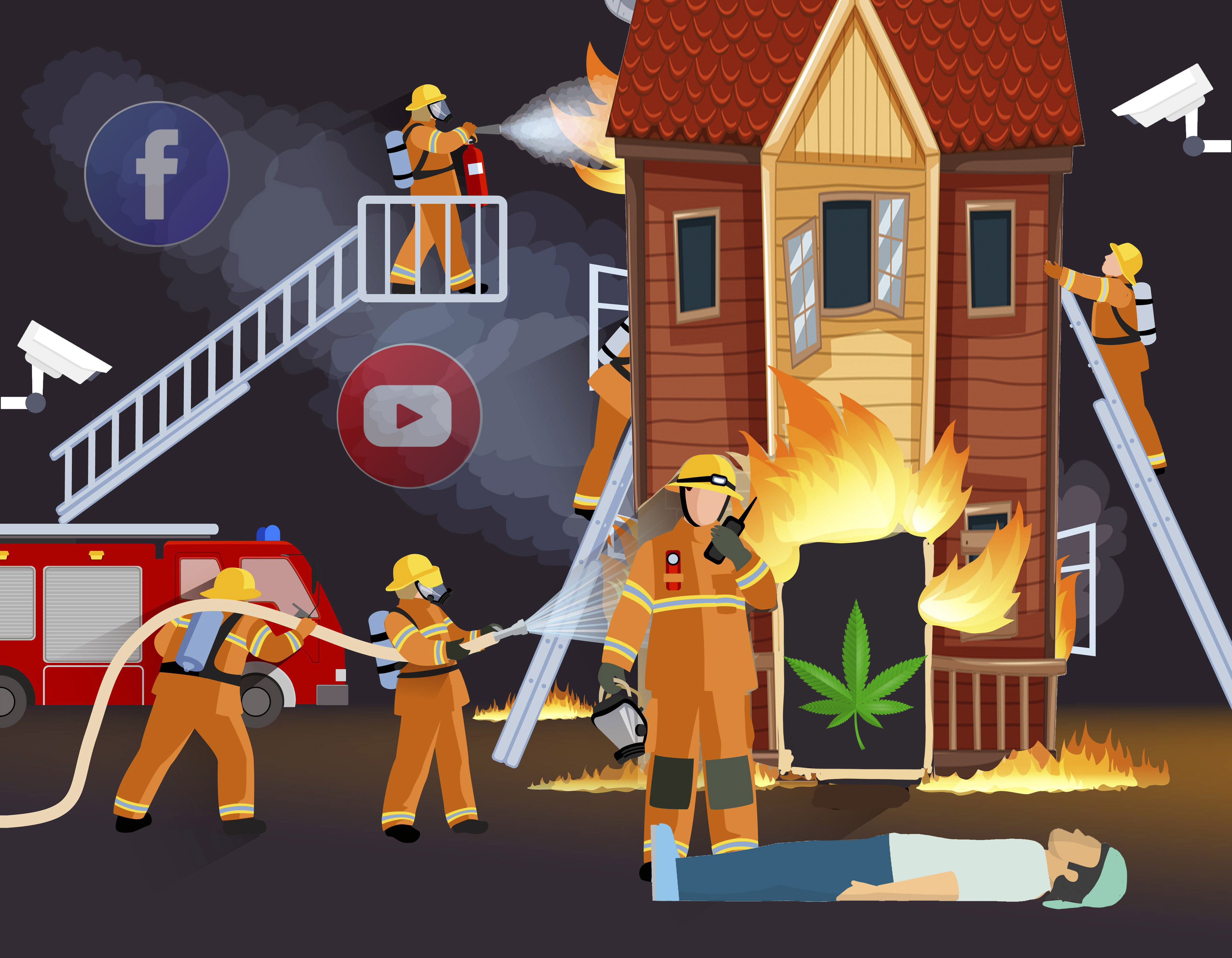
Update: New Evidence Presented in “The Mysterious Case of Billy B”
by Geomatrix Productions in Legal Video
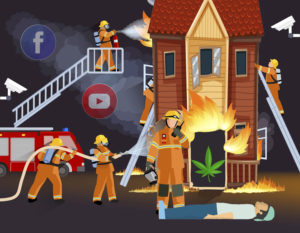 An elderly Connecticut woman suffers from dementia and is moved into a nursing facility. Her home is left abandoned by her conservator when he moves to California. Eventually the house becomes dilapidated and the town sends the conservator a notice because the property is now violating a blight ordinance, but there is no follow up. Unexpectedly the conservator dies. Three teenage boys (Billy B., his brother & a friend) get into the vacant home & proceed to smoke marijuana on the property. The house catches fire & and Billy dies.
An elderly Connecticut woman suffers from dementia and is moved into a nursing facility. Her home is left abandoned by her conservator when he moves to California. Eventually the house becomes dilapidated and the town sends the conservator a notice because the property is now violating a blight ordinance, but there is no follow up. Unexpectedly the conservator dies. Three teenage boys (Billy B., his brother & a friend) get into the vacant home & proceed to smoke marijuana on the property. The house catches fire & and Billy dies.
This is a brief synopsis of “The Mysterious Case of Billy B.” If you don’t remember ever hearing about this tragic case, it is because it never actually happened. It is a hypothetical case that was constructed for the CLE portion of Connecticut Paralegal Day 2019. Multiple individuals from all aspects of Connecticut litigation & law shared their expertise on key issues of this fictitious matter & focused on what they would address in these circumstances.
After the hypothetical was presented, the CLE truly began. Plaintiff’s counsel commented on how they would approach the case and Defense counsel explained what action would be taken to counteract these claims. An elder law attorney spoke on key conservator issues. A state attorney addressed criminal prosecution, which of course brought in another counsel to discuss criminal defense.
From private investigators to a retired Connecticut Superior Court Judge, it continued, experts weighing in on concerns & actions to be pursued in “Billy B’s” case.
Geomatrix Litigation Support Specialist, Walter J. Stopka, addressed what was to him an audience with many familiar faces, and presented Geo’s take on the case.
“Hi, I’m Walter from Geomatrix. Some of you may already know me. Did you know Billy B. was a straight “A” student? He had a full ride to MIT. Billy also volunteered at the local soup kitchen & sang in his church choir. On top of that Billy B. was a champion clog dancer, and all of this will come out in the Wrongful Death settlement documentary we are producing. Defense will get a powerful preview of what the jury is going hear when weighing damages.”
“That said, defense counsel has decided to refute the claim of pain & suffering. They found an expert who will show exactly how marijuana blocks pain receptors in the brain and we are collaborating with him on a demonstrative 3D animation that will prove it.”
“Defense counsel also found photos & video on social media of the boys playing with fire. These kids would actually draw pictures with gasoline then set them ablaze. The trouble is there’s difficulty getting these files offline, so Geomatrix will download and capture all of that.”
“In addition, the private investigators discovered, the next-door neighbor has surveillance cameras all over their property. The boys can be seen on video literally throwing lit matches at one another as they enter the home. However, it is an outdated system and doesn’t export files, so Geomatrix will be needed to capture that video as well.”
“We have also been secured to videotape all depositions in this case, because the demeanor of those involved needs to be captured with the testimony. Geomatrix is synchronizing these depos as well, which will be great for impeachment, as the remaining boys have repeatedly changed their stories.”
“Geo’s FAA certified drone pilot is recording aerial footage showing the proximity of the firehouse to the property where Billy B. met his untimely death. The firefighters could have arrived on the scene unbelievably quickly & extinguished the flames, had the fire chief not decided to call off his crew and “Let that eyesore burn.”
“Much of this will be used at the trial, where our technicians are meeting the trial presentation needs of both sides.”
“The winner of this case will undoubtedly secure us to produce a press release video, discussing their success in such a complex litigation. It will be released on social media & posted on their website.”
Did you think of something else you would have had us do in this case? Better yet, is there something Geomatrix can do for your case?
Read more
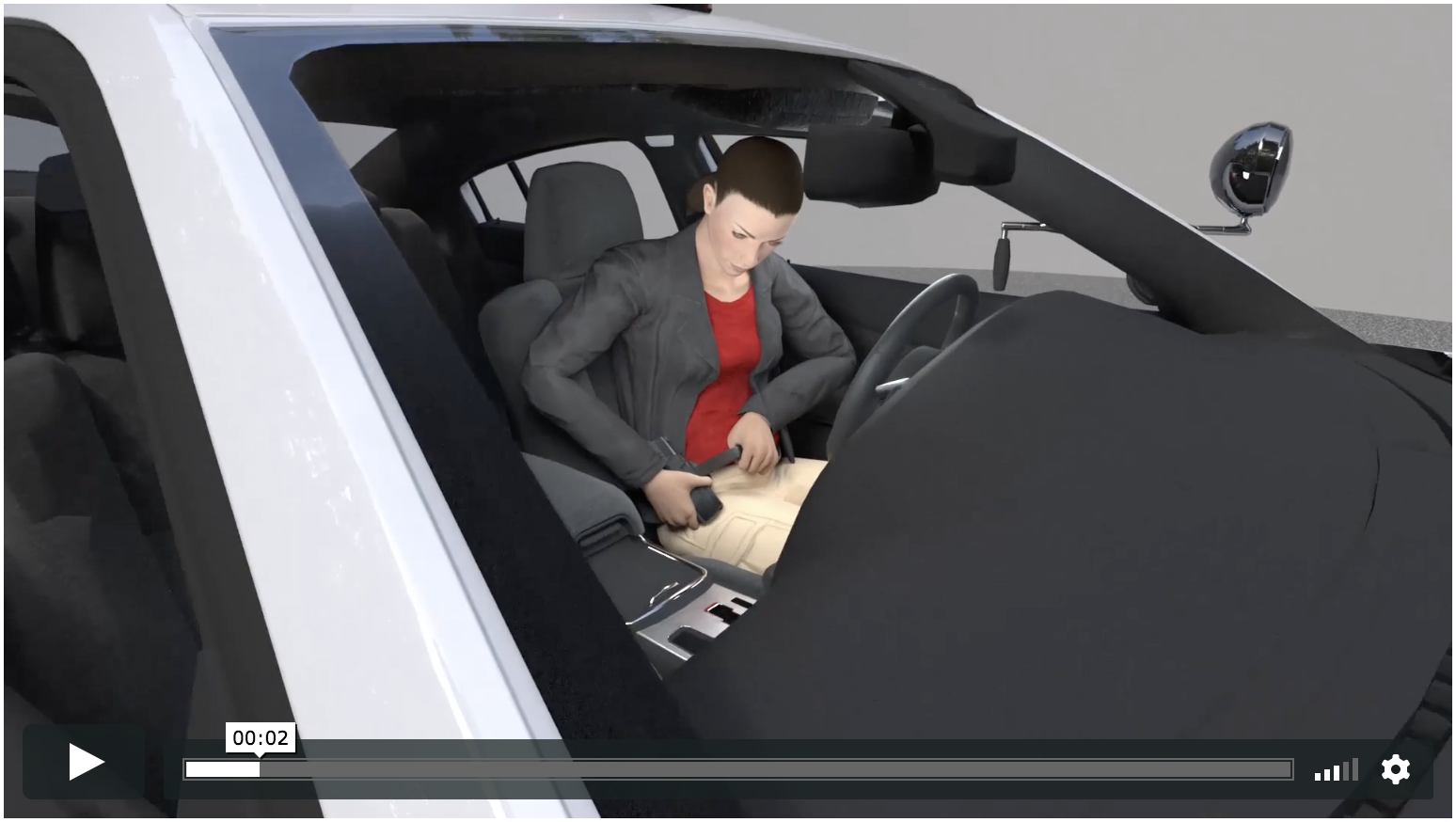
Dueling Animations
by Geomatrix Productions in Legal Video
Geomatrix recently worked with Westport attorney Jeffrey S. Bagnell to out-gun SIG Sauer, Inc, one of the world’s largest gunmakers, in a product liability lawsuit in U.S. District Court in Virginia.
Bagnell originally filed the $10 million suit in federal court in April 2018 against the gunmaker after Loudoun County Virginia Sheriff’s Department
officer Marcie Vadnais said her department-issued SIG Sauer P320 handgun fired while she was removing her fully holstered weapon from her duty belt.
Vadnais, who had served seven years with the department, never drew or touched the weapon, and suffered a completely severed femur, embedded shrapnel, and serious blood loss as a result of the bullet’s impact.
“The x-rays of her leg showed a femur shattered so completely that surgeons had to insert a titanium rod through the broken halves of her femur, and secure it with screws to her pelvis and knee,” said Bagnell, “otherwise she would not have been able to stand. The pain she had to endure from the bullet, and before and after her surgeries, was unspeakable.” Bagnell had previously sued SIG Sauer in Connecticut over a similar incident in 2017 involving a Stamford SWAT team member, who was shot in the knee by the same gun without a trigger pull.
SIG tried to paint a picture of his client’s actions as an “accident,” and downplayed the damage caused by the bullet. During opening statements, SIG’s counsel announced that she was fully ‘healed’ – – while minutes later she limped to the stand and was assisted by the U.S. Marshal to raise her leg so she could testify with less pain. The optics of that moment were terrible for SIG, according to Bagnell.
“After defeating SIG’s summary judgment and Daubert motions,
I brought in Geomatrix to produce a video to show SIG Sauer the devastating effect that a shattered femur from the bullet had on my client Marcie.
The video showed her not only as an experienced officer, but as a wife and mother of young children. It was important for me to humanize her, but also convey that I was willing to spend whatever was necessary to help her.”
Working with Geomatrix, Bagnell was also prepared with a 3D animation for trial.
“I made it clear to the jury that SIG was asking them to believe that my client, who had qualified on the weapon three times, randomly decided one morning to just draw her weapon and shoot herself in the thigh, for no reason. My experts had presented reports showing that gun not only fired in its holster (which made a trigger pull impossible), but contained a manufacturing defect after being CAT scanned.”
SIG Sauer lawyers presented a 3D animation during opening statements which demonstrated their version of the incident. They maintained the untenable position that Marcie drew her weapon, found the trigger, and pulled it hard enough to shoot herself, all in one quick motion.
“I showed the jury another 3D animation, produced by Geomatrix, that showed what actually happened that morning,”
said Bagnell. “It showed that the weapon discharged while Marcie was jostling it to remove it from her belt, consistent with our expert opinions. We were able to get that admitted as demonstrative evidence and I used it in direct examination of the plaintiff.”
The matter settled for an undisclosed amount on day two of the trial.
“Although no amount of money can fix what happened to Marcie, the settlement brought a sense of relief and closure for her,” says Bagnell. “I can’t thank Geomatrix enough for their timely and skilled assistance with the electronic evidence we presented.”
Read more
